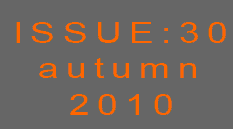Branding the benefits of nuclear
The author George Orwell once famously referred to it as “…the rattling of a stick in a swill bucket.” The eminent sociologist, Marshall McLuhan, called it “…the greatest art form of the twentieth century.” The “it” in question is the high impact, in-your-face world of advertising. Well, whether you believe that it represents the very worst of our consumerist society, see it as a necessary evil, or accept that it legitimately satisfies a need in all of us, you cannot deny that advertising is part of the fabric of modern life. Nobody is totally immune to its invasive appeal.
But, how things have changed in recent months! Pick up a newspaper. Surf the internet. Tune in it to a commercial TV channel. Sooner or later you will notice something which, until a few years ago, would have seemed highly improbable, except in a few countries - an ad singing the praises of nuclear energy.
Of course, nuclear ad campaigns are nothing new, but the extent, the scope and the ambition of nuclear advertising today have increased greatly. After years in the relative advertising wilderness, the nuclear industry is once again selling its core messages with confidence and clarity. And public knowledge and acceptance of all things nuclear has undoubtedly improved of late. But there’s still a long way to go. Today’s nuclear ad campaigns are all about branding the benefits of nuclear. Its security of supply and climate change credentials and the stable and affordable electricity prices it offers consumers are among those core messages articulated. Increased advertising spend reflects how the nuclear revival is real and sustainable. Advertising gurus have been quick to identify and exploit a lucrative, evolving market. When it comes to energy options, advertising is no longer the exclusive domain of wind and solar power, of natural gas or the oil industry. Nuclear wants a bigger slice of the action and is increasingly putting its money where its mouth is.
A range of advertising techniques and approaches are being used to communicate the advantages of nuclear energy. Some campaigns focus on a single message aimed at a broad range of audiences. Conversely, other campaigns target specific audiences, like opinion-leaders and decision-makers, with a range of messages. Using all media simultaneously is another approach that was recently used for the first time in Europe. The concerted campaign launched by the Belgian Nuclear Forum last year, which won the 2009 PIME Award for Communications Excellence, achieved massive exposure by appearing on TV, billboards and at bus stops, as well as on the internet and in the written press. Blanket coverage makes it hard to ignore that nuclear has something to say.
Web-based advertising campaigns use the world of cyber advertising to establish and promote a strong and confident brand and favourably influence public opinion. Corporate ads emphasise corporate values and performance, reinforce the image of the industry and seek to sell a vision of the future. They are also used to recruit the next generation of talented engineers and scientists to drive the industry forward. A recent EdF print campaign targeted new recruits to the industry and science community with the slogan “The future is a choice you make every day.”
Anyway, whether you adhere more to the Orwell or the McLuhan school of thought on advertising it’s difficult to argue against the fact that the added oxygen of publicity represents an opportunity for the whole nuclear community. After decades of being on the wrong end of widespread anti-nuclear ad campaigns it’s about time we embraced the medium and exploited it to the full. Isn’t it?
In this autumn’s edition of ENS NEWS the traditional Word from the President piece provides a salutary word of warning, as Vladimir Slugen focuses on how we need to learn from the lessons of the past in order to progress. After the perennially thought-provoking contribution from Andrew Teller – this time it’s an analysis of French and American nuclear history - ENS NEWS N° 30 kicks off with some “advertising” of its own, flagging some of the flagship events in the pipeline - PIME 2011, RRFM 2011 and NESTet 2011.
The Member Societies and Corporate Members section contains numerous articles announcing landmark events or reasons for special celebrations. These include the 20th anniversary of the founding of the Romanian Nuclear Association (AREN), the 25th anniversary of ENUSA’s presence in Salamanca (Spain), a series of important research collaboration agreements involving SCK-CEN and various international partners and the significant first-ever delivery of a spent fuel container for storage at the Temelin NPP, in the Czech Republic. Also featured is a round-up of news from various Societies, a look beyond Europe’s frontiers to the Chinese market and an interesting case of “yimby.”
The YGN Report section in ENS NEWS N° 30 features the presentation of the annual Jan Runemark award in recognition of a special contribution made by an individual to the European research community, an interview with EdF Energy’s CEO, Vincent de Rivaz, and a contribution from the Austrian Nuclear Society’s active young lieutenants.
The World News section focuses on some of the upcoming international conferences sponsored by ENS and a selection of the latest global nuclear news from NucNet.
As usual, ENS NEWS, like any publication, benefits greatly from the feedback provided by its readers. Can I encourage you to provide me with any comments, ideas or suggestions that you think might be relevant and could help improve the magazine in the future. Thank you in advance for your support.
Enjoy ENS NEWS N° 30!
|

Mark O’Donovan
Editor-in-Chief, ENS NEWS
|
|
|

